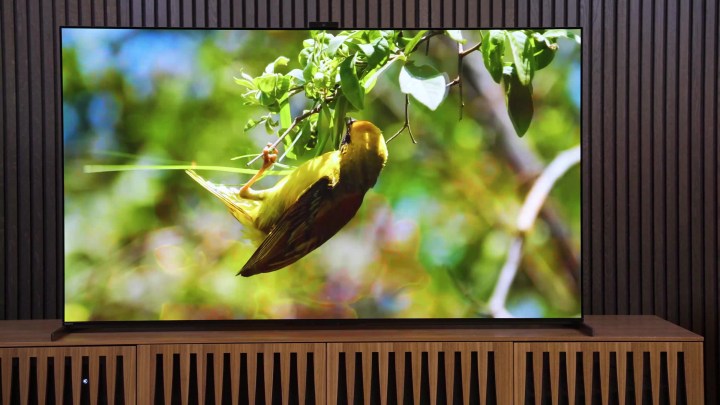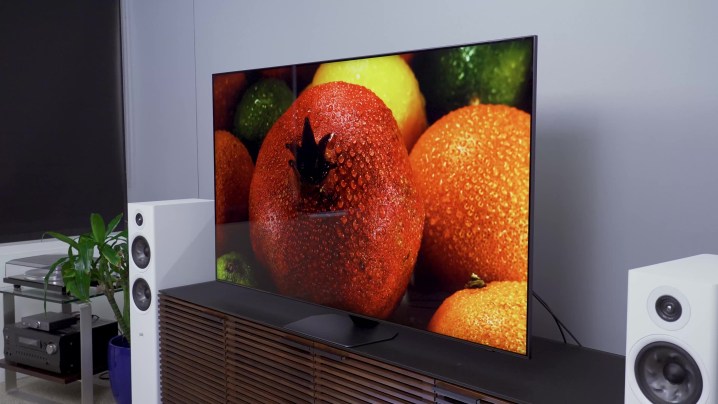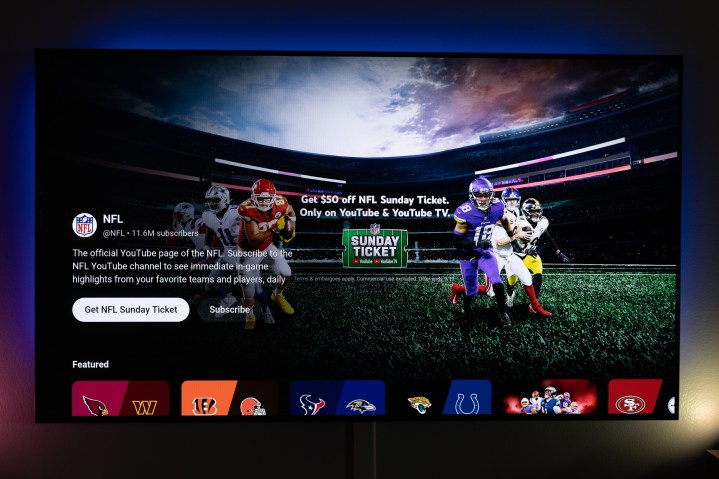In the world of TVs, Sony and Samsung have long been fierce competitors, prioritizing all the integral elements that go into a world-class display such as resolution, backlighting, picture upscaling, and the smart TV experience. They also produce TVs in a wide range of sizes, from 32-inch sets suitable for bedrooms to 85-inch-plus models for large living rooms.
While Sony and Samsung TVs have a lot in common, there are also key areas where they differ. We’ve compared both brands to help you decide which is best for you.
Design
Both Sony and Samsung make some of the best-looking TVs, with razor-thin bezels and incredibly small depth measurements. For example, Samsung’s S95C OLED, as the company’s flagship model, is part of Samsung’s Infinity One Design, eliminating the perimeter bezel around the screen for an enhanced, distraction-free viewing experience.
Sony TVs are also quite thin, with flagship models featuring razor-thin bezels complementing the screen. Both manufacturers tend to favor industrial grays and matte-black shell colors for their sets.

Chassis-wise, Sony and Samsung sets tend to have HDMI ports and other connections on the back and sides, but Sony sets are generally a bit bulkier than Samsung’s TV lineup.
Display

Both Sony and Samsung’s TVs offer a wide range of resolutions, from 4K and 8K models to 1080p and 720p options. They also produce a few different types of sets, including LED-LCDs with either edge-lit or full-array backlighting and QLEDs with mini-LED lighting and QD-OLEDs. QD-OLEDs are currently only made by Sony and Samsung and represent some of the best TVs available.
Colors, upscaling, and motion

Both Samsung and Sony TVs use advanced picture engines and offer exceptional HDR performance, excellent upscaling, and refresh rates of up to 120Hz. They both also support HDR10, Dolby Vision, and HLG and have advanced sound optimization features
Smart TV and user interface

Both brands offer easy-to-navigate user interfaces and smart TV platforms, supporting an immense app library, voice assistant support, and seamless integration with various devices and streaming apps.
Gaming

Both Sony and Samsung TVs are built to handle advanced gaming, with support for HDMI 2.1 inputs, gaming optimizations, and picture presets for an immersive gaming experience.
Remote control
Samsung remotes tend to be minimalist and sleek, while Sony remotes are more button-packed. Both brands could benefit from adding backlighting to their remotes for convenience in the dark.
Editors’ Recommendations


